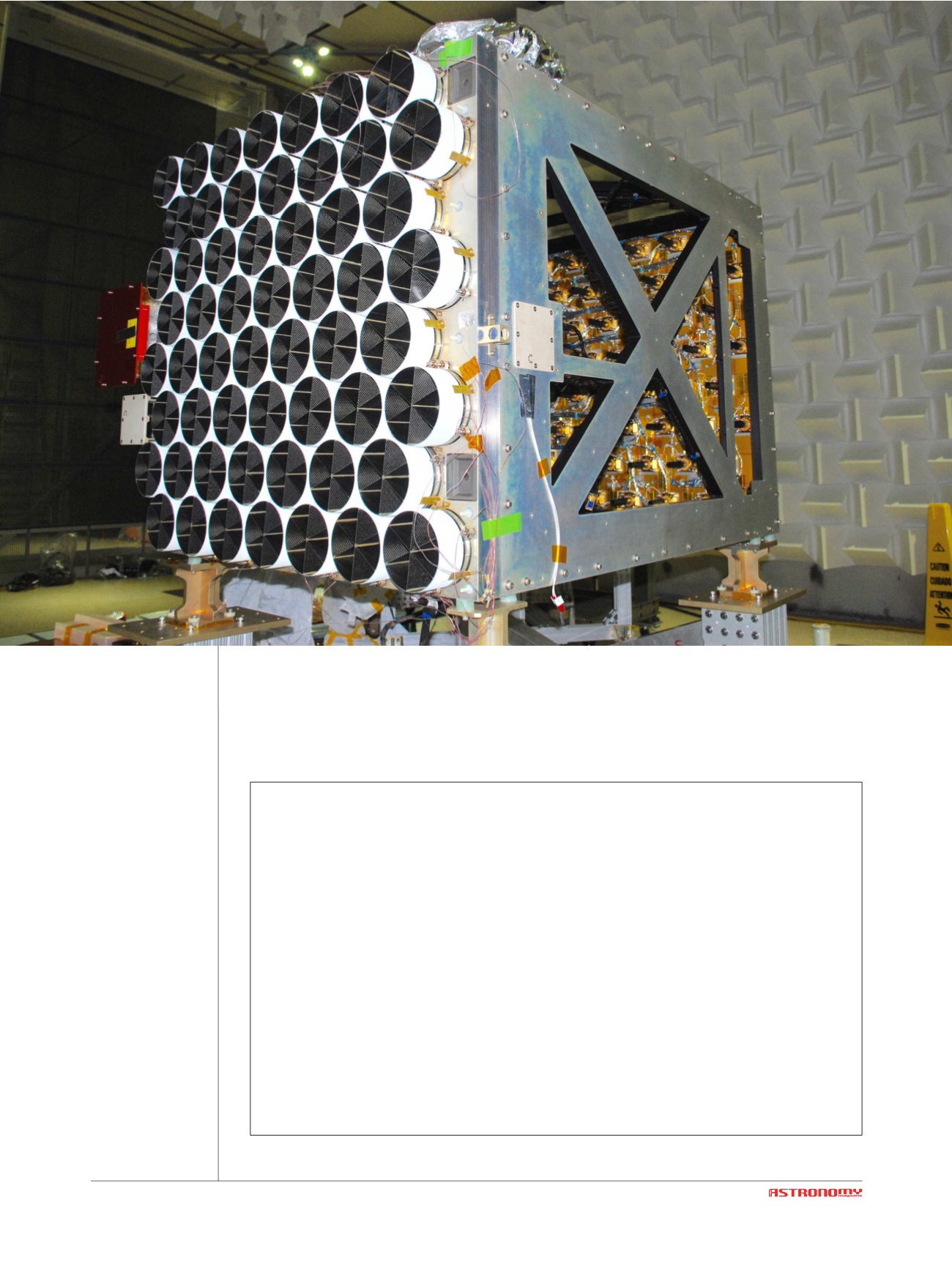

SEPTEMBER-OCTOBER 2017
rors, in fact, they would simply pass
through them. Researchers solved this
problem by using metal foil sheets folded
to form truncated hollow cones, whose
slanted inner surfaces make the X-ray
photons coming in from space hit them at
a very low incident angle (almost parallel).
A couple of ‘bounces’ on two truncated
cones with an increasing inclination are
enough to cluster the X-ray photons on a
focal plane. Since a single sheet of metal
foil (or a sequence of 2-3 sheets), even
with a large diameter, collects very few X-
ray photons, researchers use ‘mirrors’ with
T
he aligned
collection of
56 X-ray concen-
trator optics
(XRC) and silicon
drift detector,
that represents
the heart of the
NICER's X-ray
Timing Instru-
ment (XTI).
Right, this video
shows the robotic
installation of
NICER on ExPRESS
Logistics Carrier
2, initial deploy-
ment, precise
point tests and
more. [NASA]
















